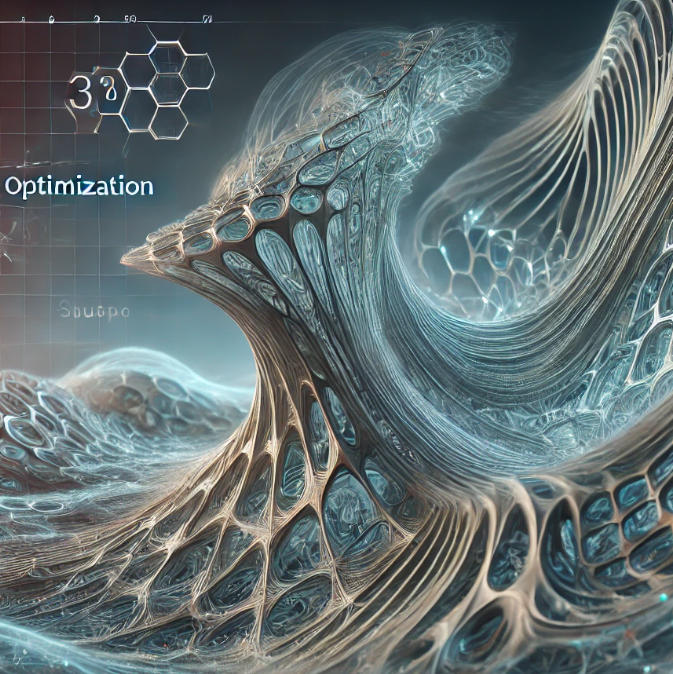Introduction
Shape optimization involves adjusting the outer boundary or surface of a structure to improve its performance while maintaining its fundamental topology (i.e., the number of holes, connections, and components remain unchanged). It modifies the geometry of an existing design rather than creating an entirely new layout.
Problem Setting of Shape Optimization
Objective Function: Compliance
As we are seeing Topology Optimization,
\begin{align}
J(\Omega) = \int_{\Omega} f \cdot u \, d\Omega
\end{align}First, the change in the stiffness matrix ( K ) should be considered. This is the standard way of finding shape derivatives.
K u = f
By differentiating (1) with shape \Omega, we get
\frac{dJ}{d\Omega} = \frac{d}{d\Omega} \left( f^T u \right)\\
\space \\
\begin{align}
\frac{dJ}{d\Omega} = f^T \frac{du}{d\Omega} \space \space \space
\end{align}Where the u satisfies following equation.
\begin{align}
K \frac{du}{d\Omega} + \frac{dK}{d\Omega} u = \frac{df}{d\Omega}
\end{align}For sure, we would get \frac{du}{d\Omega} if we solve (3), but its computation cost is quite high since the derivatives on every nodes are demanded.
Adjoint Method
So, what is introduced instead is Adjoint Method.
Let’s say we have parameter vector \lambda, and it satisfies following equation (4).
\begin{align}
K^T \lambda = -\frac{dJ}{du}
\end{align}From the definition of J, J = f^Tu, and \frac{dJ}{du} = f must be satisfied. Therefore, we would introduce following equation.
K^T \lambda = -f
Luckily, this equation is easy to solve. Now that we have derivativs of J with respect u in (4), we are going to re-forumulate equation (2)by going back to derivatives of force equilibrium (3):
\lambda^T \left( \frac{dK}{d\Omega} u + K \frac{du}{d\Omega} \right) = 0(-f^T) \frac{du}{d\Omega} + \lambda^T \frac{dK}{d\Omega} u = 0therefore,
\frac{dJ}{d\Omega} = f^T \frac{du}{d\Omega} \space \\
\space \\
\begin{align}
\frac{dJ}{d\Omega} = \lambda^T \frac{dK}{d\Omega} u \space \space
\end{align}It seems that this formulation is able to deal with shape optimization with handling this derivatives.
